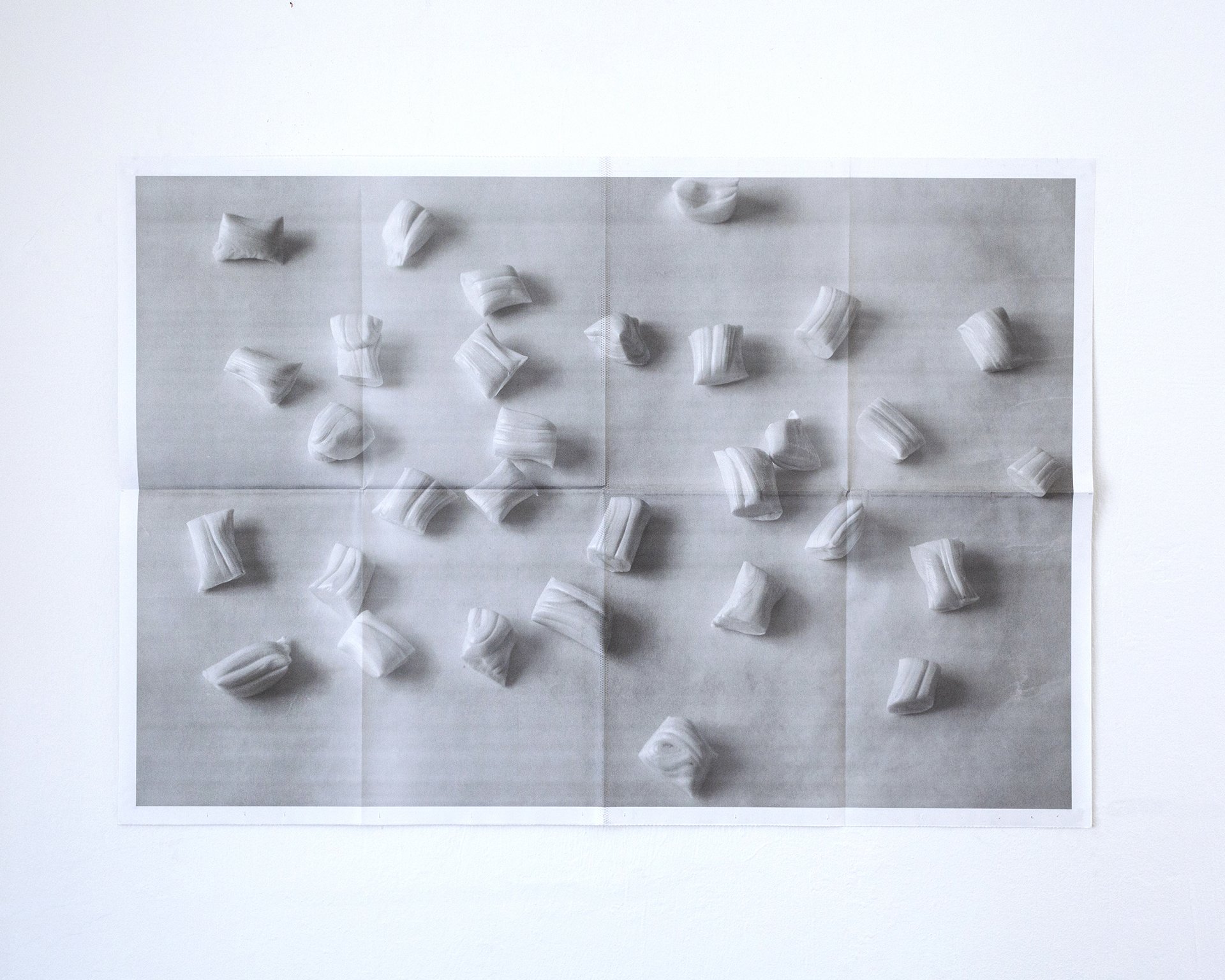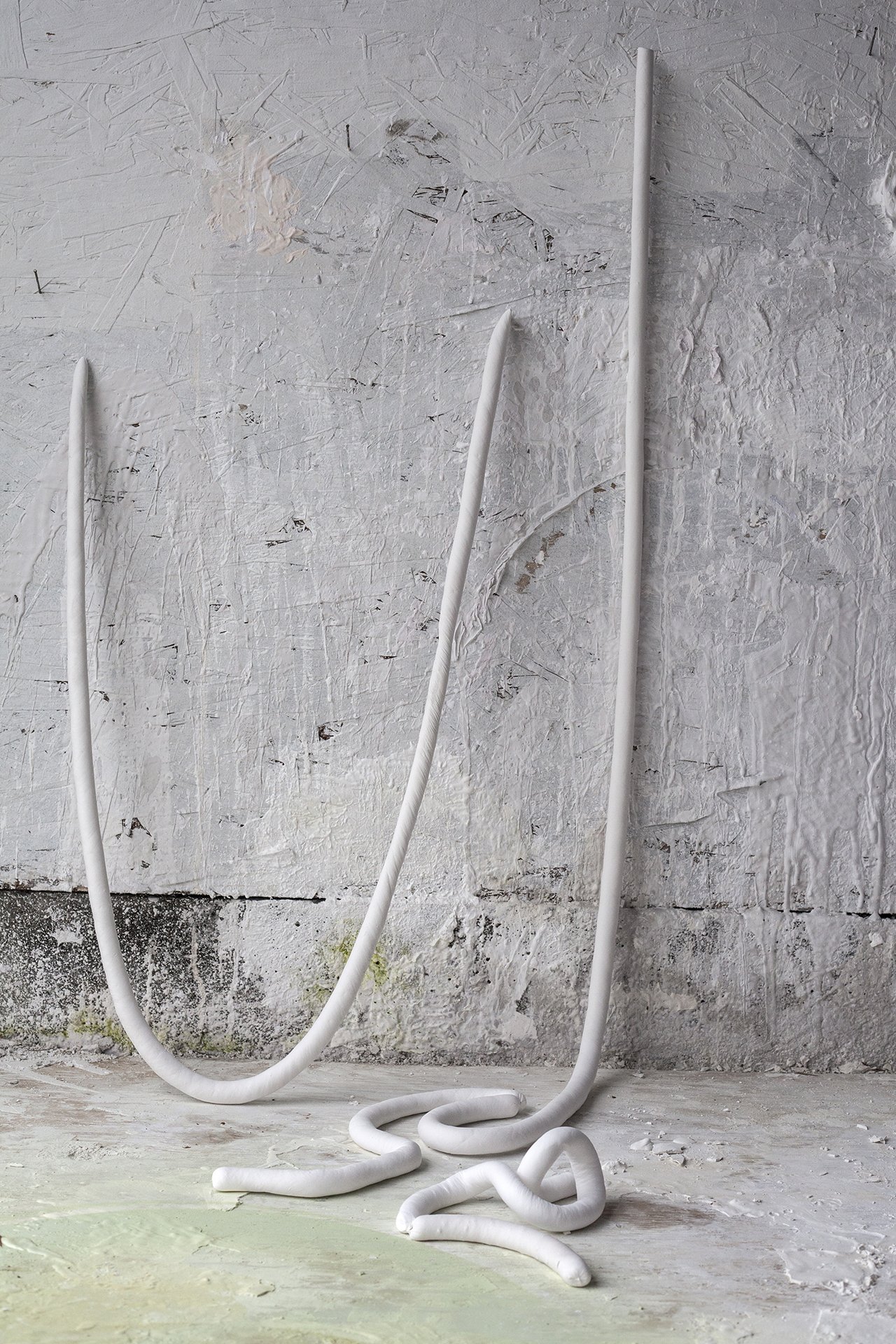An Interview with Francesca Lohmann
I (Liz) met Francesca Lohmann when we were both completing their MFAs at Cornell University. Francesca came into the program with a strong printmaking background and quickly began expanding ideas of the multiple and forming sculptural strategies that related to imprints, mutation and repetition. Francesca is now based in Seattle, WA and kindly answered a few of our questions below.
Untitled, 2015
When did you start printing?
I began printing in a winter session course during my freshmen year of college at RISD-- I took a lithography class, and I just fell in love with the process. Graining the stones was my favorite part-- it felt so medieval, and was satisfyingly physical. At the time I also loved to draw, so when the time came to chose a major the next year, printmaking was an easy choice.
Coil VI, 2016
Where do you make your work? Home studio? Shared print space?
I make my work primarily in a home studio. I have been doing a lot of messy casting with plaster and cement, and I am lucky to be able to use an open air garage behind my house for that. Sometimes I work in other spaces-- the foundry, my computer desk, or my kitchen.
One of the practical challenges for me in making sculpture, is just how much space it takes up, both to make and to store. Sometimes I miss being able to fit all my work into a couple flat files…
Coil VI, 2016
How do you see your print background informing your more expanded practice?
I still think of myself as a printmaker. I think of my cast sculptures as imprints…. Records of previous states, of textures, forms, behaviors. Physical memories, evidence of contact.
Printmaking was always incredibly tactile for me, and I find that involvement with touch, and surface continues in the new work. With printmaking I loved that one’s results didn’t have to be precious. The same matrix could generate not just one print, but 50, or 100-- each an original, but from the same matrix. You could exchange prints, give them away, sell them for very little. And there was endless possibility for variation, for the recording of change. You could print a plate at any time, then keep working on it, and you would have the record of how it was. I think that also informs how I make my current work. I tend to repeat myself, to go back and do things over and over to see the differences, the variations.
Taffy V, 2016
Who would you love to collaborate with?
This is hard… There are so many people!
I’m currently collaborating with Coley Mixen, a wonderful Seattle-based musician and multi-media artist/ librarian. We bonded over our love of jello, and have been getting together on a semi-regular basis to make stuff/play with food for over a year now.
I’d love to collaborate with people who are experts in areas that I am not. Like glass blowing, plastics, film, or working with concrete on a gigantic scale… Good collaboration requires people that work well together, who are willing to listen to each other... It can be difficult between artists to develop a dynamic of mutual input where one party’s voice is not being overwhelmed by the other. But when it does strike a balance, it can be so exciting.
I always loved the communal and collaborative nature of the print studio…. I find it’s the same in a foundry or anywhere that people are required to share resources and work together in order to be productive.
Untitled, 2016
Where are some of your favorite spaces in Seattle for contemporary art or design?
This is also hard. Seattle is a wonderful place to live, but access to the larger artworld is somewhat limited...
But there are some really wonderful things that have happened on the margins, in people’s living rooms, and alternative spaces. And at the University of Washington, they do a public lecture series in conjunction with the class “Critical Issues in Contemporary Art Practice”. It takes place during the winter quarter, and I’ve very much enjoyed going to the lectures over the past couple years.
And I like the programming at Veronica, a small gallery in the Mount Baker neighborhood.
untitled (lump series), 2015
What are you working on at the moment?
I’ve been making sculptures with taffy recently. Unlike plaster or bronze, taffy does not fix, and will only hold a record briefly. When fresh, it settles at a pace on the edge of perceptible movement, like a geologic phenomena sped up. It pulls itself down to a point of stasis… I’ve been increasingly interested in that behavior. And I love the literal candy colors and smells that are authentic to the material.
Currently I’m working on a 200lb taffy sculpture for a group show that will take place in May, in a temporarily vacant deli. The show is self organized, with artists Marisa Manso and Dori Scherer. I’m also doing a residency at Veronica, that will culminate with a show in the closing weeks. The residency runs through June 3rd.
Untitled, 2016







